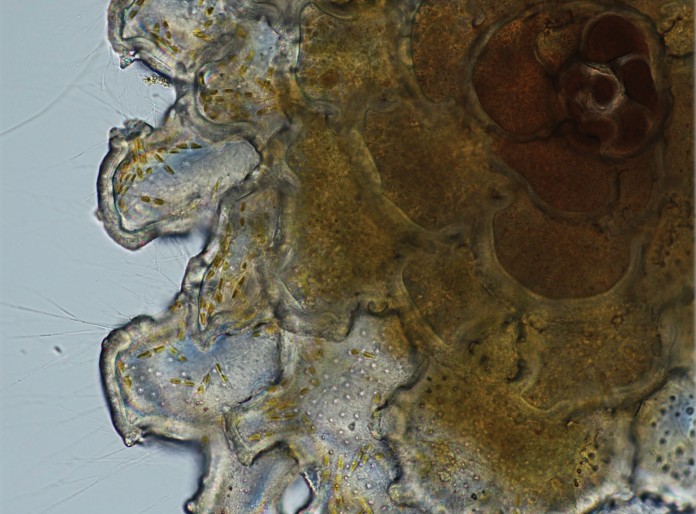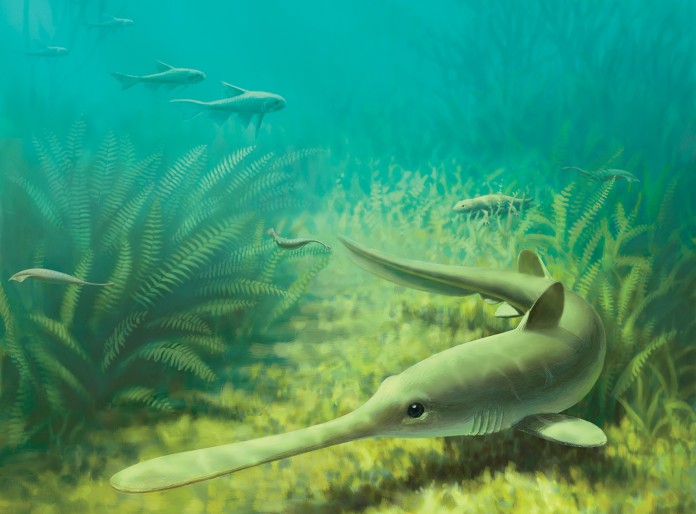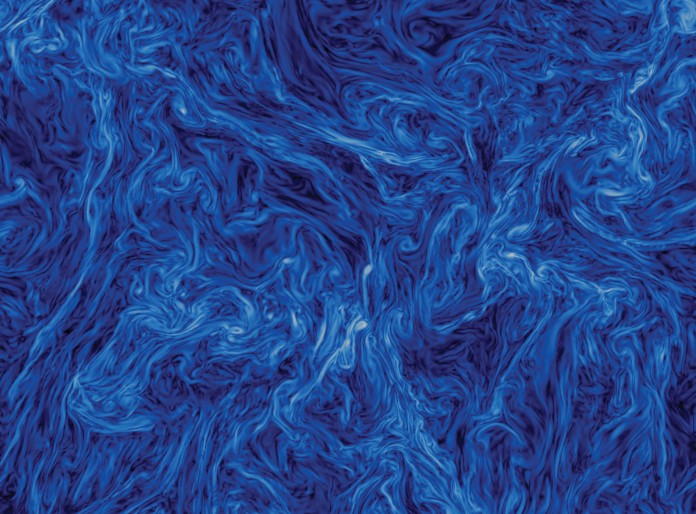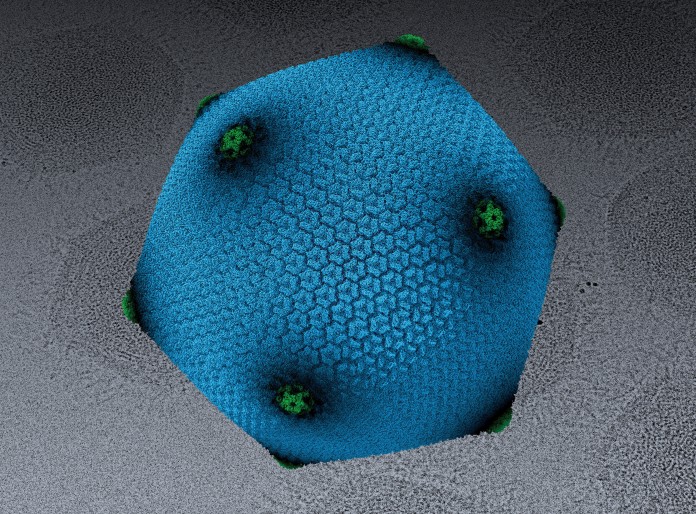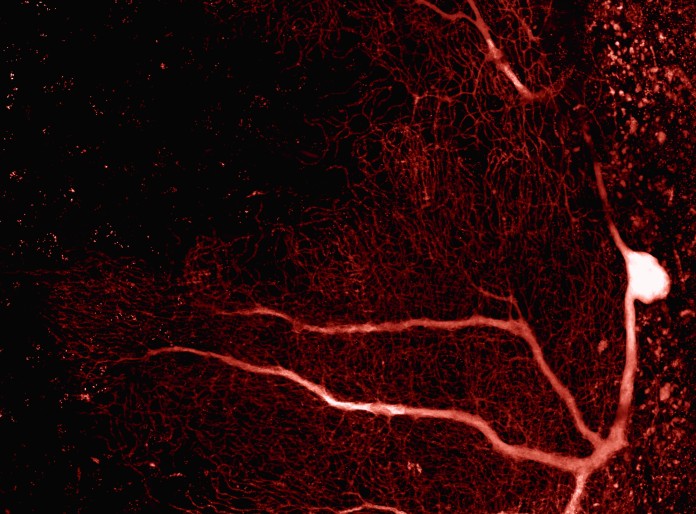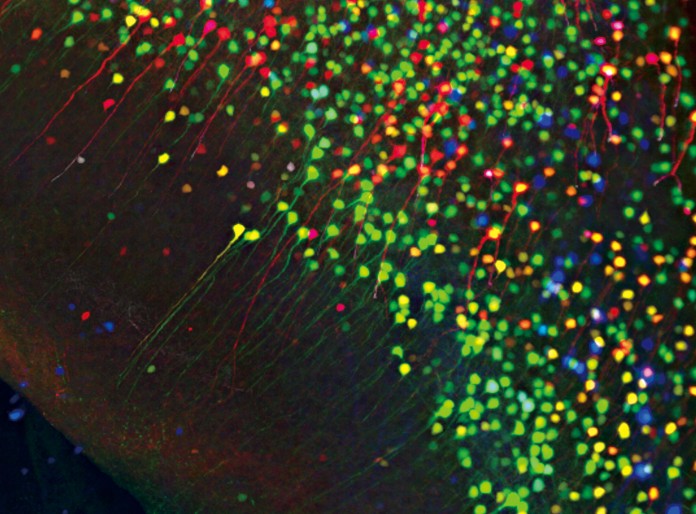Inverted microscopy image of a snow-flake shaped foraminifera (Planorbulina sp.). On the left side of the organism we can see the web-like filaments used to capture its food, here some rod-shaped diatoms that are trapped inside the foraminiferal shell.
Author: Dewi Langlet






